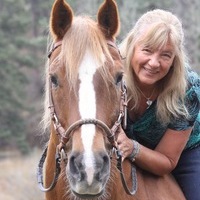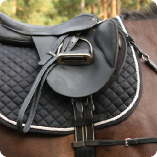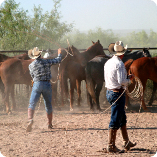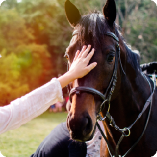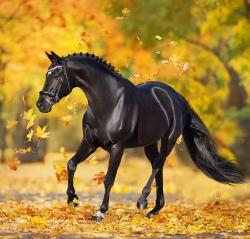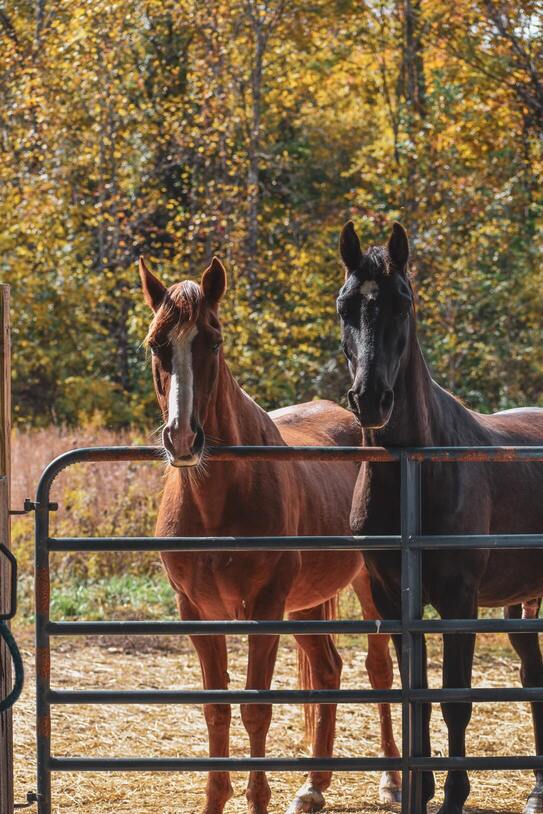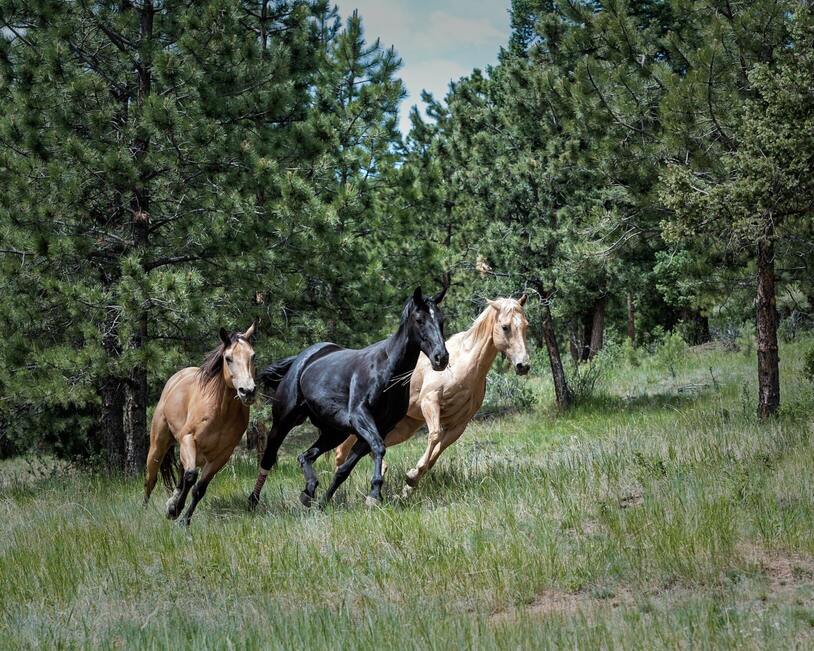Collection: What is it?

True collection is the highest level of training and is comparable to the horse getting his college degree, yet he’s learning how to carry a rider with each ride, no matter his age. Collection is the last step in training, not the first, and it has nothing to do with head carriage or an arched neck.
So what is collection and how do you achieve it?
When discussing collection, it is helpful to picture a foal, bounding in pasture, “showing off” and holding his frame in perfect frame, his energy happily bundled into into a ball. Collection is roundness. It’s high-octane powerfully focused, and elevated energy. If you imagine the coiling and contraction of muscles so that he is contained and ready for precise motion, you’ll get the idea of how the energy is rounded and used to produce impulsion. With the impulsion being a pushing from coiled muscles, the strides can be long or short, fast or slow. It’s not how fast or slow your gait is, as much as it is about how focused your horse, you and your combined energy are that make the truest collection possible.
To collect a horse is to fine tune him so that it feels like a high-performance race car beneath you. It is the feeling of moving together in sync through feel. It’s the revving of the engine that allows for the collection to occur, almost comparable to a sprinter at the starting block. It’s forward. It’s concise. It’s synchronized and light, more like a ballet dancer than a Formula race car. It is intentional.
When riding a collected horse, it feels like you are sitting on bottled energy, riding a contained explosion, and yet it’s not an explosive at all. Collection, done right, feels like gliding on a smooth, balanced current knowing that your slightest cue will elicit an immediate and willing response from your horse. No wonder it is the top of the training game and desired by so many!
What it means to “collect” a horse—a not-normal way of explaining what it is:
-
Collecting a horse is to hold him with legs and seat in a state of controlled energy bundle, without stress or angst.
-
Both mind and body of both horse and rider must calmly work together in order to maintain the balanced rhythm and cadence needed to demonstrate collection.
-
It is a joint effort, an agreement to round and contain the energy.
-
Collecting a horse is to hold him between go and stop in a manner that either gear is accomplished easily, knowing it’s not simply kick to go and pull to stop.
-
Collection is the ever-ready mental and physical state to maneuver precisely and with intent in any of the five directions; up, back, forward, left or right. The sixth, down is not usually included in this list, but diagonal is, and can be forward or back combined with left or right.
-
A collected horse has good forward rhythm and impulsion.
-
Collecting a horse is not to slow him, though it is possible to either speed up or slow any gait while collected.
-
Collection is fluidity, and the fluid is guided, contained and directed.
-
Maintaining the horse’s natural way of movement helps him collect more easily.
-
Horses naturally collect and our job is simply to learn how to ask for them to do so. This is a flippant way of saying it is natural for them, but not for us. Take your time and learn correctly.
What collecting a horse is not:
-
Collection is not about putting the horse’s head down and making him arch his neck.
-
A collected horse will not be moving slower than him normal pace, although he can, but he can also go faster, with either longer or shorter strides.
-
If a horse’s tail is raised, it does not mean he’s collected.
-
A collected horse does not need to prance, though prancing can be a form of his natural ability to collect —in the right hands.
- Collecting a horse does not require special tack, bridles or saddles and no store-bought item will shorten the time needed to train correctly.
How to collect a horse:
-
Begin by recognizing that although this list is short, it takes years to complete.
-
Both you and your horse must be fit; mentally and physically.
-
Know how to ride in a balanced manner while helping maintain your horse’s balance.
-
Be aware of how to maintain tempo and cadence in all gaits.
-
Teach him to engage his hind end so that his forward impulsion comes from there.
-
Understand and utilize contact through your seat, legs and finally, your hands.
-
Be confident in maintaining straightness, suppleness and balance with your horse.
-
Improve impulsion by increasing the haunches ability to perform at highest possible level.
-
Develop and refine all gaits, balance, thrust of haunches and flexibility of spine.
-
Use seat and legs more than hands.
-
Activate hands last, not first.
-
Do not hold horse “in place” but seek the illusion that his hind end being active and forward shows he is collected. Even with no reins, the horse should maintain the collected state easily and for many strides.
How long does it take to teach a horse to collect?
The short answer is that it will take many hours and usually years to teach a horse to collect himself under your direction to achieve a high level of competence. A properly conformed horse will find the job easier than a poorly conformed horse. For example, if his back is too long, he’s built downhill, he’s ewe-necked, or if his shoulders are too steep, he’ll have a much harder time putting himself together than a balanced horse will, and this is why dressage, sport, reining and cutting horses are in the higher price ranges than their trail riding counterparts who may not ever need to collect on a regular bases.
To learn to collect a horse, first ride one that knows how to be collected. A schoolmaster and the right instructor make all the difference here as without learning how to feel and ask for it, the struggle is long and very real. It’s important to have a sound mind and body—both you and your horse—and to take as long as is needed so that rushing doesn’t cause damage to either of you.
As always, contact me directly through my website: www.TanyaBuck.com if you want to chat about riding your horse, Happily Ever After!
~Tanya Buck
FREE Tips here on how to balance both you and your horse, plus you will be signed up for other free goodies all year! https://lp.constantcontactpages.com/su/ou9pQ9C/balancetips
